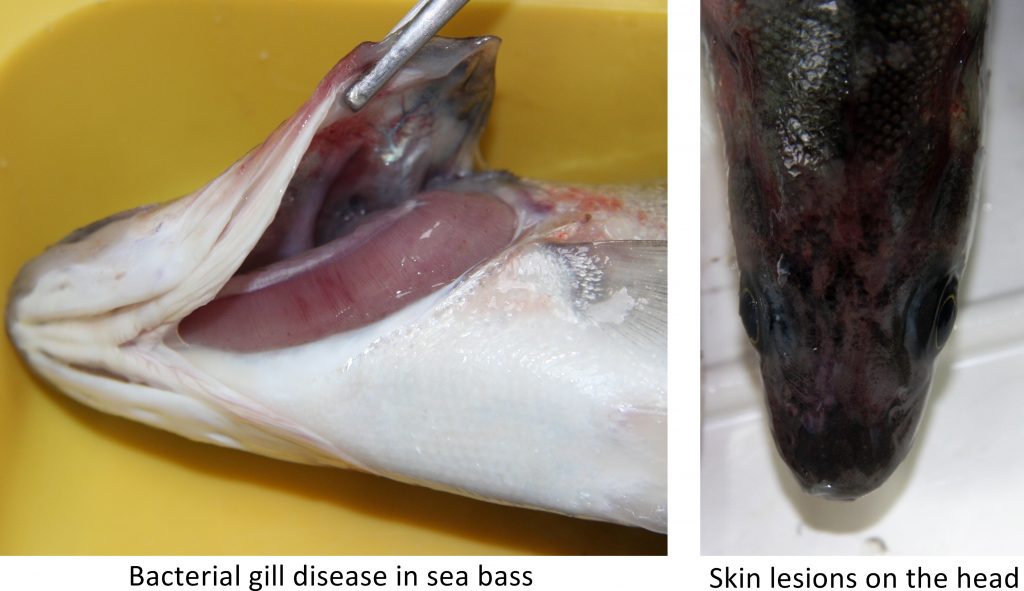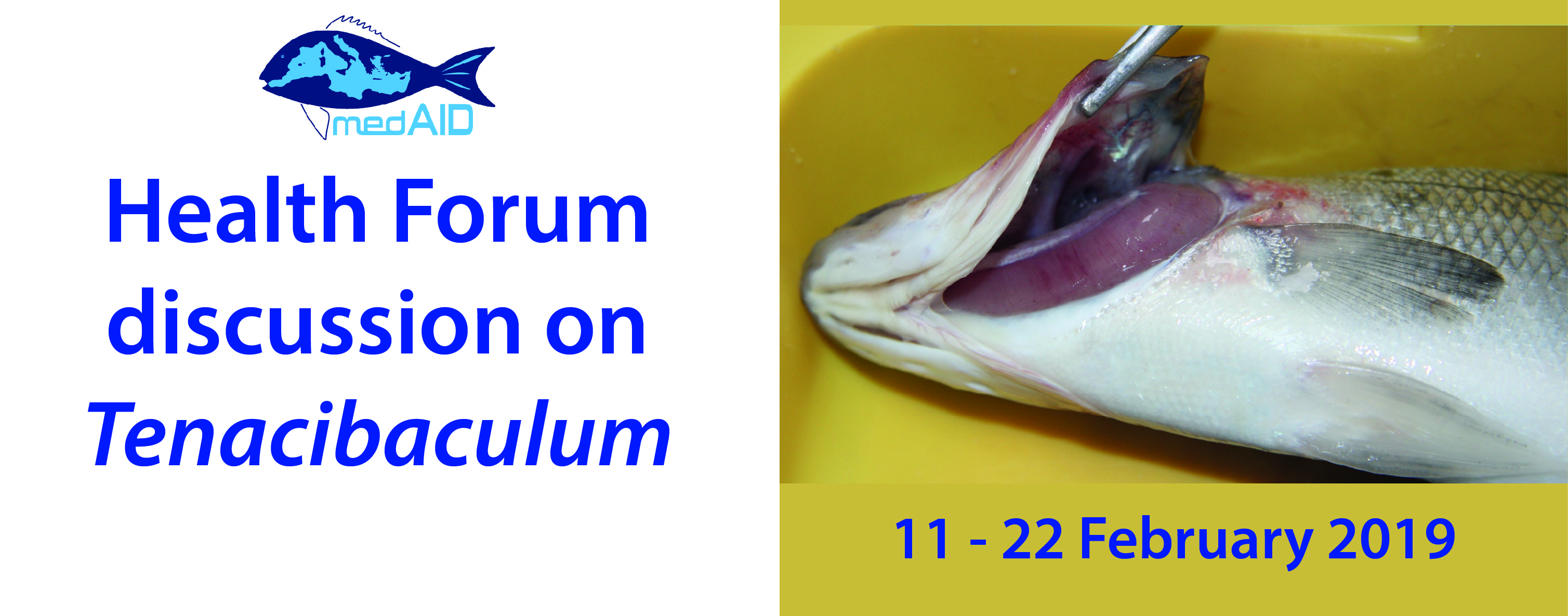Dates: 11-22 February 2019
Forum coordinator: Dr. Snježana Zrnčić, HVI. Zagreb, Croatia.
Discussion moderators:
Dr. Alain le Breton, VETEAU, France
Dr. Jean-François Bernardet, INRA, Centre de Recherches Virologie et Immunologie Moleculaire, France
After a pause, with proposed discussion on tenacibaculosis, the MedAID Health Forum will again put efforts to gather field diagnosticians, laboratories, relevant authorities in charge of disease management in the Mediterranean mariculture and other stakeholders.
Tenacibaculum infection (previously known as flexibacteriosis) represents one of the first bacterial conditions being reported in marine aquaculture in a large range of species including flat fish like sole (Solea solea) and turbot (Schopthalmus maximus); and finfish, namely sea bass (Dicentrarchus labrax) and sea bream (Sparus aurata). The disease is associated to the infection with bacteria from the genus Tenacibaculum spp. In some marine areas or in recirculation systems, the infection severely threatens production with mortalities rising over 30%.
Pathological changes caused by tenacibaculosis are generally affecting fish from nursery phase to pre-growing fish, up to 80-100 grams average weight. Prevalence and intensity of the infections vary in relation with environmental parameters and zootechnical/rearing conditions and are influenced with factors such as handling, mechanical lesions or stress and interfering parasitic infestations. Many studies support the hypothesis on Tenacibaculum spp. as opportunistic pathogen that primarly causes extensive skin lesions and gill abrasion, and subsequent systemic infections.
Clinical signs of tenacibaculosis are variable according to fish species and type of infection. Affected fish show loss of appetite, become lethargic and show skin lesions around the eyes, on the head on the body surface described like ulcers, necrosis, eroded mouth, frayed fins and tail rot, and sometimes necrosis of the gills and eyes.
Diagnosis is done on fresh smears from scrapping of the lesions by light microscopic observation directly or after quick staining followed by isolation of bacteria on selective media and identification based on proteomic fingerprinting using high-throughput mass spectrometry MALDI-TOF spectrometry or genomics. It confirms the presence or the emergence of different pathogenic species and most clinical cases present co-infections by at least two Tenacibaculum strains which may explain the evolution of clinical aspects, different pathogenicity patterns and poor treatment efficacy.

To know more about tenacibaculosis, you can read on our blog a Mini-review prepared by Alain Le Breton: http://www.medaid-h2020.eu/index.php/2019/02/05/tenacibaculosis/
1. Objectives of the Tenacibaculosis discussion
• To exchange the recent scientific data of a practical implication, with the health experts dealing with the problem caused by tenacibaculosis in farmed fish
• To help farmer understanding the circumstances for clinical diseases appearance
• To help farmers implementing their zoosanitary measures aiming to prevent tenacibaculosis
• To share “tips and tricks” of farmers about how to deal with Tenacibaculum spp. infected fish batch from one area to help farmers in other areas with the same problem
2. Process proposed to focus the discussion
The health farm experts are encouraged to share their valuable practical knowledge; the current prevention strategy should be profoundly evaluated and analyzed
3. The topics that should be discussed
• Epidemiology of tenacibaculosis in seabass and seabream
• Zoosanitary rules
• Good aquaculture practices in prevention of Tenacibaculum spp. infection
• Diagnostic methods choice and use in different diagnostic capacity labs

Forum coordinator

Discussion moderator

Discussion moderator

